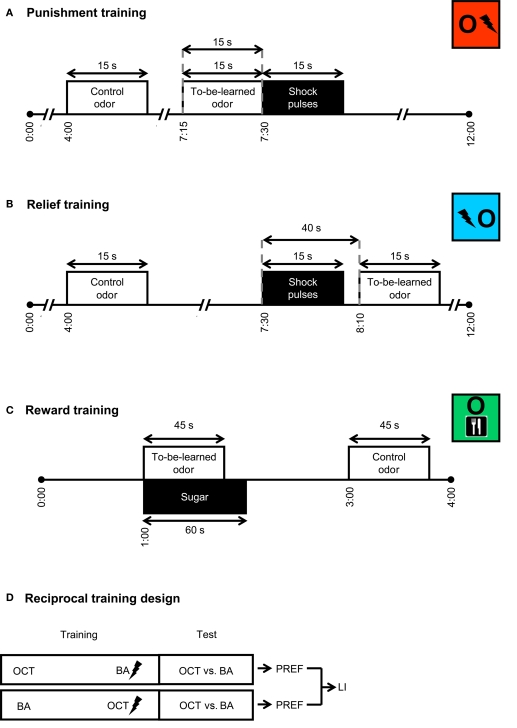Figure 1.
Training. For punishment training (A), flies received two odors and pulses of electric shock. A control odor was presented long before shock; a to-be-learned odor preceded shock with an onset-to-onset interval of 15 s. For relief training (B), while all other parameters were unchanged, the to-be-learned odor followed shock with an onset-to-onset interval of 40 s. For reward training (C), flies were successively exposed to a to-be-learned odor in the presence of sugar and then to a control odor without any sugar. Although not shown here, in half of the cases, reward training started with the control odor instead of the to-be-learned odor and sugar. For each kind of training, we used a reciprocal design (D): two groups were trained in parallel; for one of these, e.g., 3-octanol (OCT) was the control odor and benzaldehyde (BA) was to be learned; the other group was trained reciprocally. Each group was then given the choice between the two odors. Based on the flies’ distribution, preference indices (PREF) were calculated. Based on the two reciprocal PREF values, we calculated a learning index (LI). The situation is sketched for punishment learning, but also applies to relief and reward learning.

